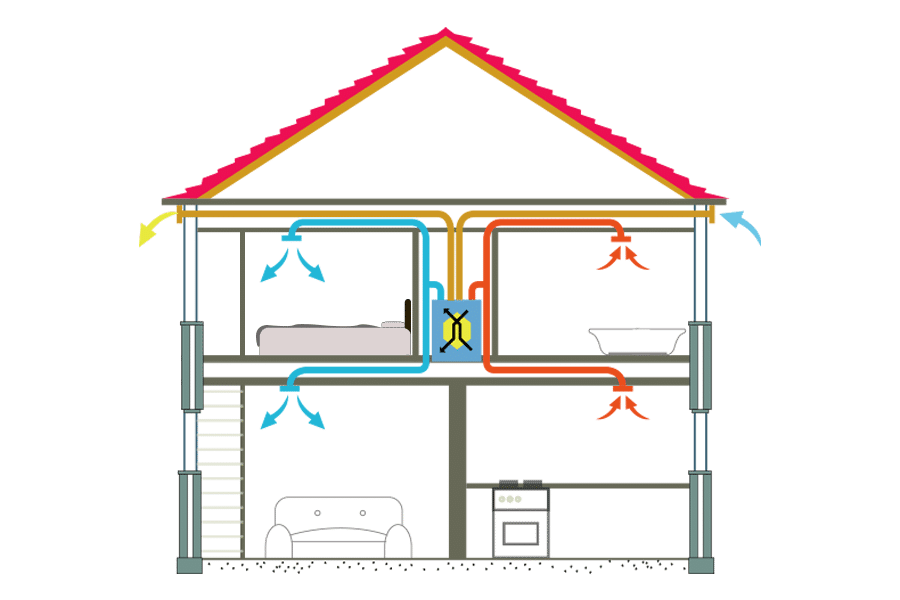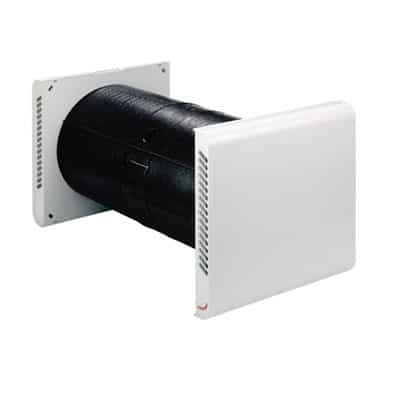When it comes to Mechanical Ventilation with Heat Recovery (MVHR), one of the first questions people ask is: “Should I go for a centralised or decentralised system?”
Both have the same purpose — to provide your home with continuous, filtered fresh air while recovering heat from the stale air being removed. But the way they’re designed and installed can be quite different.
In this post, we’ll compare the two approaches, highlight the pros and cons, and help you decide which might suit your project best.
Centralised MVHR
A centralised MVHR system has one main unit, usually installed in a plant room, loft, or cupboard. Ductwork runs throughout the home to distribute fresh air to living areas and extract stale air from wet rooms like bathrooms and kitchens.
Pros
Whole-home solution – one system manages ventilation across the entire house.
High efficiency – large units tend to recover more heat and have lower running costs over time.
Discreet – only small grilles or diffusers are visible in each room.
Quiet operation – noise is isolated at the central unit, with silencers in ducting if needed.

Cons
Upfront installation cost – ductwork and central unit require planning and investment.
Space requirements – you need room for duct runs and the central unit.
Best for new builds or major renovations – it’s harder to retrofit into existing homes without major works.
Decentralised MVHR
A decentralised MVHR (sometimes called a single-room unit) is a standalone ventilator installed in the external wall of a room. Each unit serves just that room and includes both extraction and supply with a built-in heat exchanger.
Pros
Flexible installation – ideal for retrofits or individual problem rooms.
Lower upfront cost per unit – no need for extensive ducting.
Simple to maintain – filters are easily accessible.
Scalable – you can add more units over time.
Cons
Room-by-room solution – each unit only serves one space, so multiple are needed for whole-home coverage.
Aesthetics – visible units on internal walls.
Efficiency – generally less efficient than a well-designed central system.
Noise – as the fan is in the room, it may be more noticeable (though modern units are quieter).

Which One Should You Choose?
For new builds and Passive House projects → A centralised MVHR system is usually the best choice. It integrates neatly during construction, delivers consistent performance, and ensures whole-house air quality.
For retrofits, apartments, or smaller projects → A decentralised MVHR can be a practical, affordable way to improve ventilation without major disruption.
The Bottom Line
Both centralised and decentralised MVHR systems can deliver fresh, filtered air and energy savings. The right choice depends on your project size, budget, and whether you’re building new or upgrading an existing property.
At HiPer Haus, we work with homeowners, builders, and designers to specify the right ventilation system for each project. From centralised solutions for airtight new builds to decentralised options for renovations, we can help you breathe easier.
📞 Call us today or 📧 get in touch to discuss which MVHR system is right for your home.